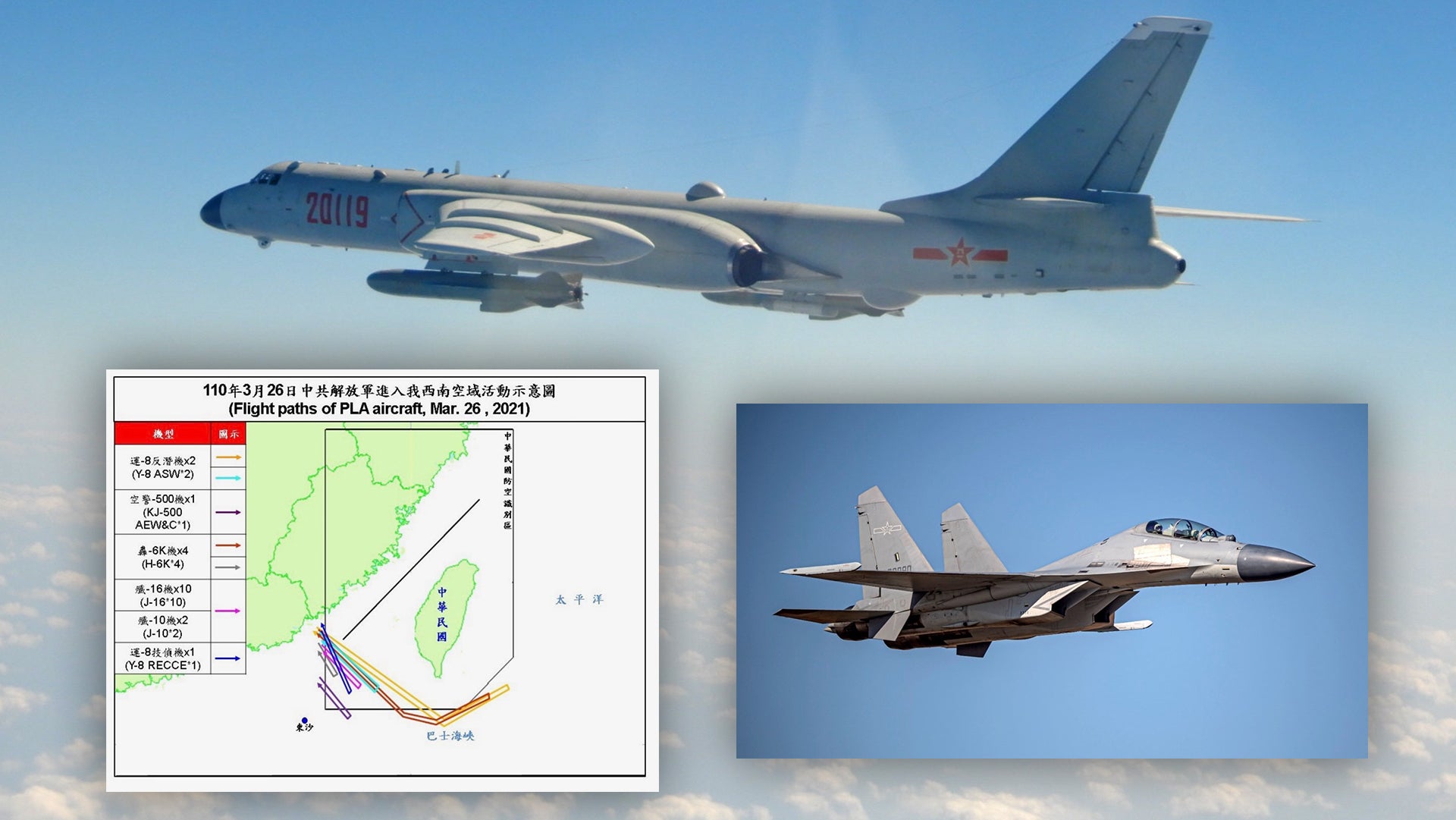No fewer than 20 Chinese People’s Liberation Army aircraft flew within Taiwan’s southwest air defense identification zone today, in a significant expansion of activity within this area, which covers most of the highly volatile Taiwan Strait. In what seems like a deliberate escalation over other recent incursions, today’s mission included bombers and airborne early warning platforms, as well as the more familiar fighters and surveillance aircraft.
According to Taiwan’s Ministry of Defense, the People’s Liberation Army (PLA) aircraft that entered the air defense identification zone (ADIZ) today comprised four H-6K bombers, 10 J-16 multirole fighters (Chinese-made derivatives of the Russian Su-30 Flanker), two J-10 fighter jets, two KQ-200 anti-submarine patrol planes, one Y-8 reconnaissance aircraft, and a KJ-500 airborne early warning and control (AEW&C) aircraft.
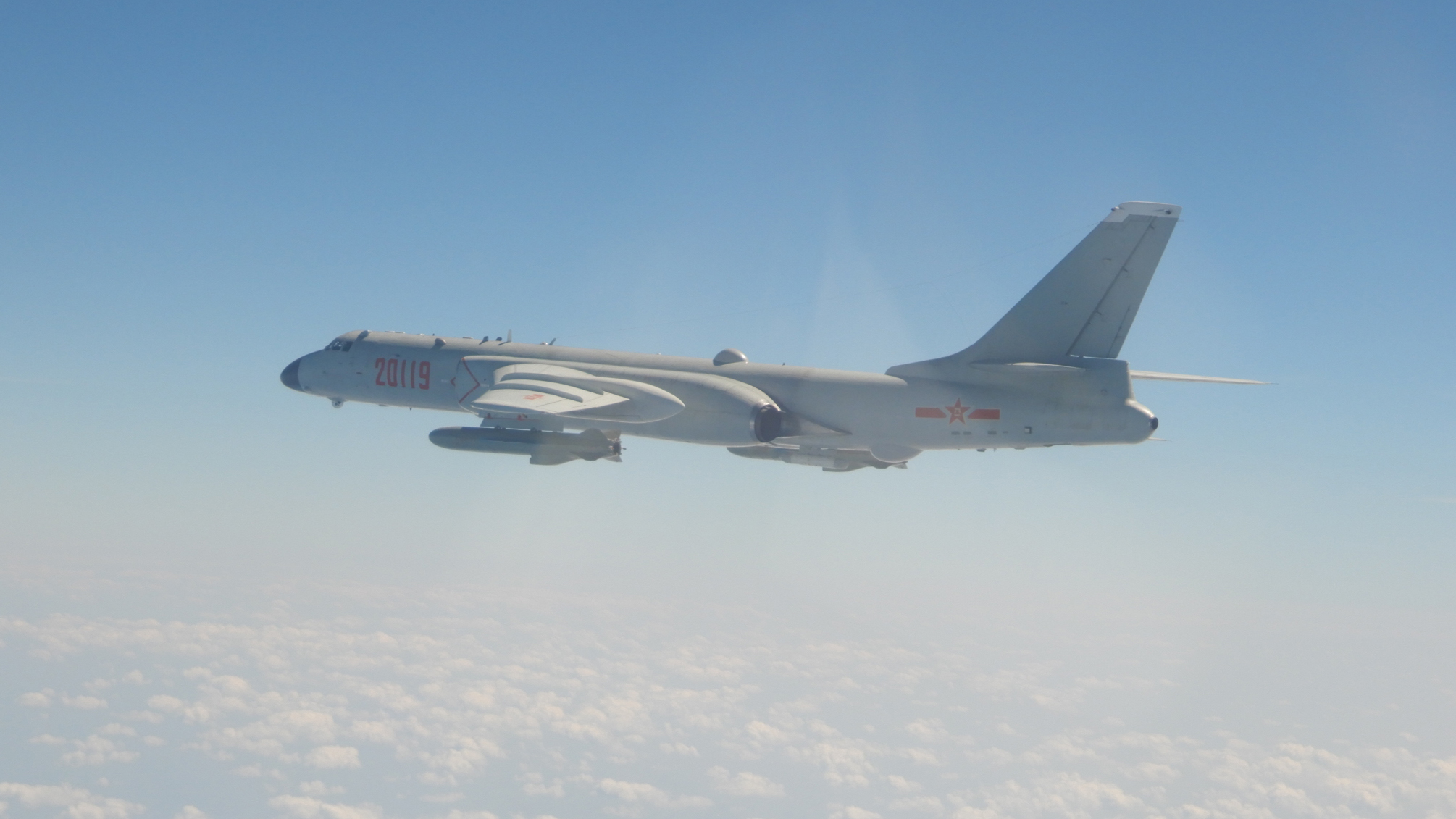
Today’s incident appears to involve the largest number of PLA aircraft to have entered the southwest ADIZ since January 24, when 15 planes were involved in a major incident that The War Zone
reported on in-depth at the time. That particular incursion involved six J-10s, four J-16s, two Su-30 multirole fighters, two Y-8 anti-submarine patrollers, and a Y-8 reconnaissance aircraft.
In both cases, Taiwan’s Ministry of Defense announced that “Airborne alert sorties had been tasked, radio warnings issues, and air defense missile systems deployed to monitor the activity.” Photos of the PLA aircraft types involved today were released by Taiwan’s Ministry of Defense, but all were archival images, including some from previous intercepts.
As well as the sheer number of PLA aircraft involved today, the route they took also appears to be significantly modified, compared to previous occasions. During the major incursion on January 24, for example, the PLA aircraft headed out into the northeastern reaches of the South China Sea, in more or less a straight line, before turning around heading back to the mainland.
Today, however, some of the bombers, as well as one of the anti-submarine Y-8s, continued their flightpaths further out into the South China Sea, before hooking around further behind Taiwan and then returning. This would seem to demonstrate the ability to approach the island on attack runs from the opposite flank. Currently, Taiwan’s defenses are focused mainly on repelling an attack from the southwest approach to the island, closest to the mainland.
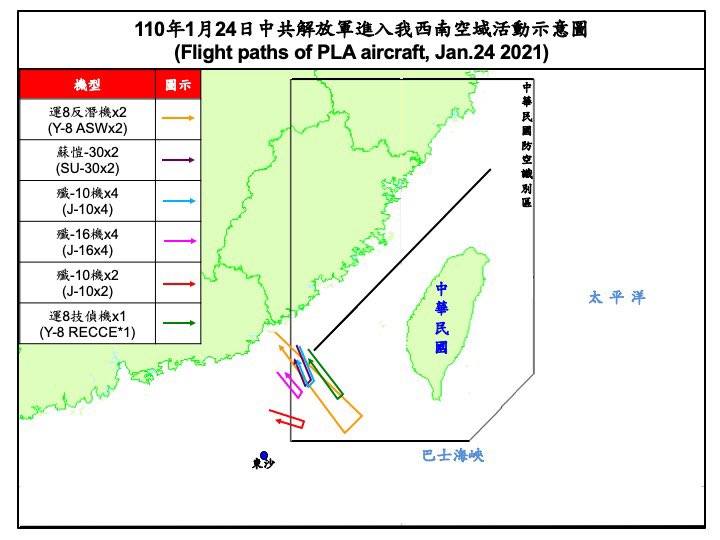
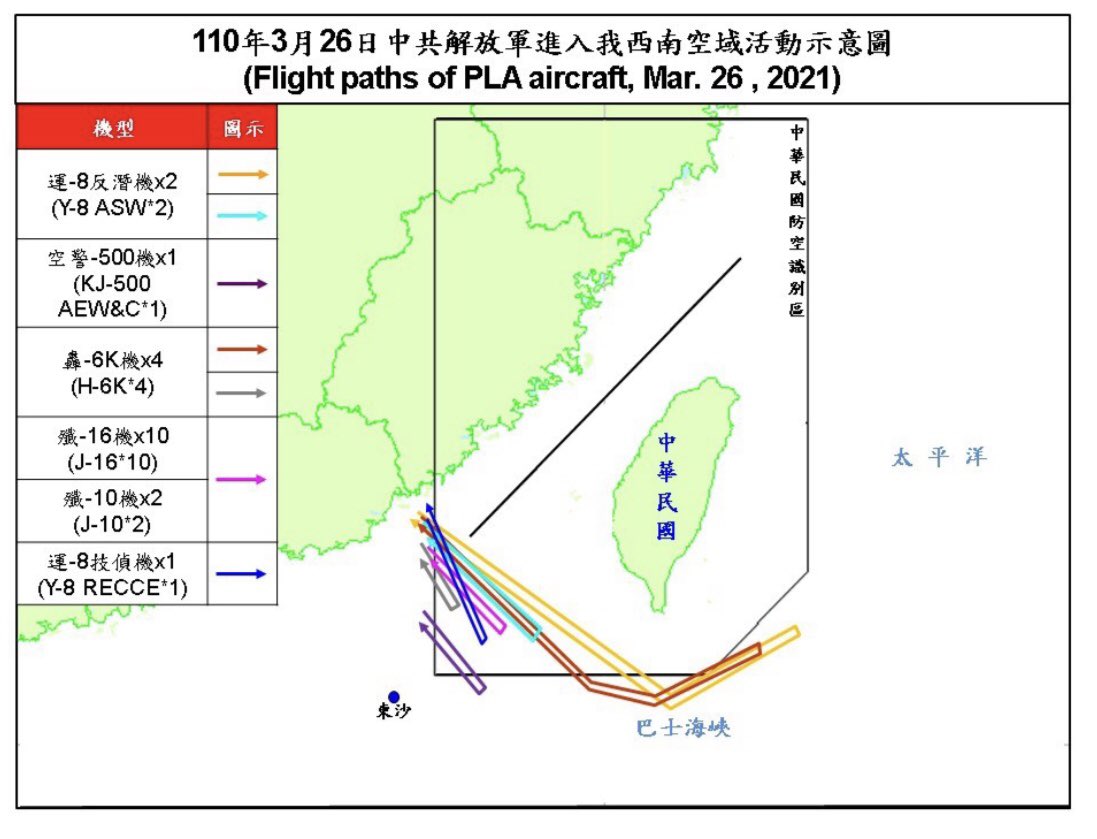
Beijing views Taiwan as a rogue province and the PLA is prepared to invade and seize control of the island by force if necessary, including if the island declares full independence.
In his 2017 book, The Chinese Invasion Threat: Taiwan’s Defense and American Strategy in Asia, Ian Easton cited official Chinese military documents that indicated that, in time of war, PLA aircraft would focus their initial attention on “important command and control centers, early-warning radars, airstrips, and air defense batteries.”
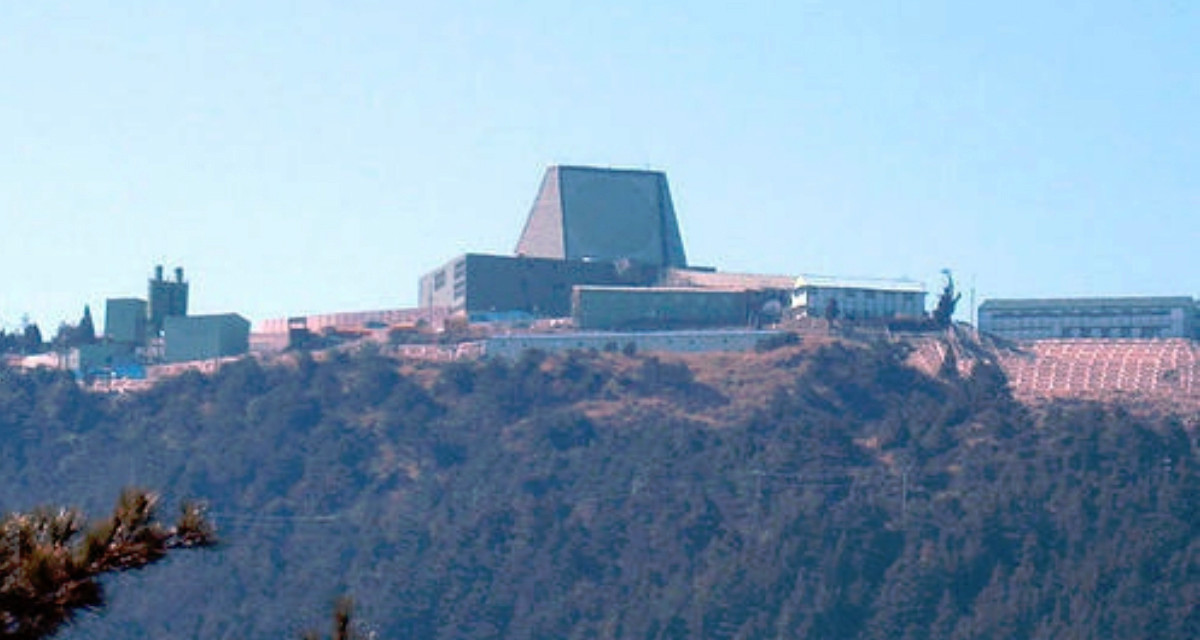
Since the beginning of this year, the area around the northern end of the South China Sea has seen repeated, large-scale incursions by PLA aircraft. In January, there was a pronounced uptick in these activities as the U.S. Navy’s Nimitz class aircraft carrier USS Theodore Roosevelt, and its carrier strike group, was in the region. The U.S. carrier was reportedly subject to mock attack runs by PLA aircraft.
As the PLA busily expands its aircraft inventory, as well as its arsenal of air-, sea-, and ground-launched missiles for just this type of eventuality, Taiwan has accordingly sought to bolster its defenses. These range from F-16 fighter jets that are tasked with combat air patrols to meet potential intruders in the ADIZ, to fast-firing gun- and missile-based point-defense systems to defend critical military installations against a range of threats, from cruise missiles to small drones.
Meanwhile, passive defensive measures on Taiwan’s part extend to military infrastructure, including Jiashan and Taitung Air Bases on the eastern shores of the island. The two hardened bases feature hangars and other facilities that are partially hidden inside granite mountains, to protect them from all kinds of air attack, including by conventionally armed ballistic missiles.

In the past, installations on the eastern side of Taiwan were afforded a degree of protection from attack due to the fact that PLA ground-launched land-attack cruise missiles didn’t necessarily have the range to hit targets on the other side of the island. At the same time, Chinese sea- and air-launched platforms were less numerous or would have to be launched within the range of Taiwanese air and shore-based anti-ship defenses.
This protection has increasingly been eroded, while a “hook” maneuver by PLA bombers armed with cruise missiles provides another option to attack objectives on the eastern side of Taiwan, or from two directions. Similar kinds of tactics seem to have been demonstrated in the past, too. In May 2018, PLA aircraft flew fighters and bombers in a route that effectively encircled Taiwan.
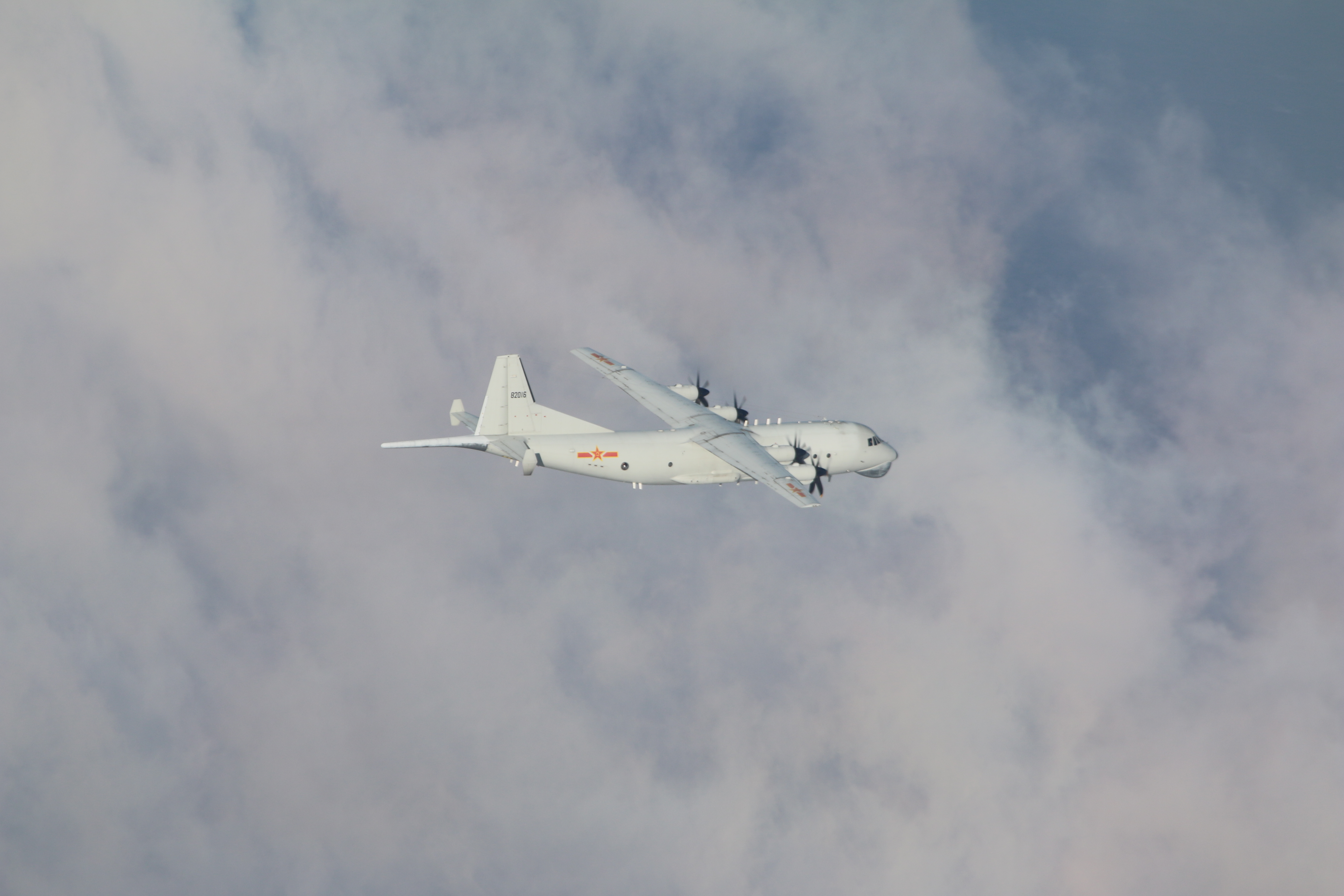
Meanwhile, Beijing has not neglected the development of its military infrastructure on the western side of Taiwan Strait, too. Earlier this month, satellite imagery showed significant progress on the construction of what appears to be a huge new military heliport very close to the Taiwan Strait, only around 150 miles from Taiwan proper, and even closer to various Taiwanese-controlled islands. The new base occupies a commanding position to support any future operations to control the Strait or even invade Taiwan.
As well as the status of Taiwan itself in Chinese military planning, all these activities point to the huge strategic significance, in general, of this part of the South China Sea, where it meets the bottom end of the Taiwan Strait, as well as the Philippine Sea and the broader Western Pacific, via the Bashi Channel, which has also been the scene of intense aerial and naval activity. The entire South China Sea is hotly disputed, with Beijing making claims to virtually all of it, a position that’s unsurprisingly rejected by the United States and most other countries.
PLA aircraft are also making increasing use of a constellation of man-made island outposts in the South China Sea, many of which also include their own ground-based anti-ship and anti-aircraft missiles. Last year, a photo emerged showing an H-6J cruise missile carrier on Woody Island, a Chinese island outpost in the northern South China Sea, for the first time

As well as being crisscrossed by commercial shipping routes, the area is routinely patrolled by Chinese submarines, including ballistic missile boats, and has hosted large-scale maritime maneuvers by the PLA Navy, including the participation of the aircraft carrier Shandong and the service’s first Type 075 amphibious assault ship.
“Taiwan is clearly one of [China’s] ambitions,” U.S. Navy Admiral Phil Davidson, head of U.S. Indo-Pacific Command, the top American military command in the Pacific region, told members of Congress recently. “I think the threat is manifest during this decade, in fact in the next six years,” he added.
Continued large-scale PLA aircraft activity in the northern end of the South China Sea, and potential new attack routes, suggest Beijing has no intention of scaling back its show of resolve toward Taiwan. It also sends a powerful signal to other countries in the region, as well as to the United States, and other powers seeking to operate freely in the Western Pacific.
Contact the author: thomas@thedrive.com
